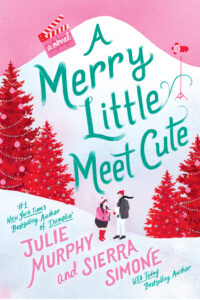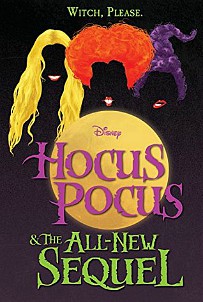Amazon Affiliate Link | Bookshop.org Affiliate Link
Note: This a HarperCollins title. The HarperCollins union has been on strike since November 10th, asking for better pay, more diversity initiatives, and union protections. Learn more at their site.
I have never read (or watched) such a horny holiday romance.
This is an M/F bisexual/bisexual romance that follows Bee, a plus-size porn star, and Nolan, a former bad boy boy band member, as they film a Hallmark-esque Christmas movie together while trying to keep their scandals under wraps.
I really enjoyed both Bee and Nolan’s perspectives—it turns out that an easy way to have me like the male love interest in an M/F romance is to make him bisexual. Bee is trying simultaneously to act for the first time, hide her porn career from the squeaky-clean Hope Channel, and fight against sleeping with and/or falling for her costar. If people find out that they’re having sex, that will threaten the image rehabilitation they’re both trying to get from this movie.
Meanwhile, Nolan is also struggling not to fall into bed with his costar. But what he’s hiding from the Hope channel is his family situation. His mom has bipolar disorder, and he’s usually home with her and his teenage sister, helping out. His mom is amazing and capable, but requires some support, especially with her switching medications right now, and he feels incredibly guilty being away from home–but the only way to support the family is with this job.
I thought this aspect of the book is really well done. We see his mom as a three dimensional person who has been an amazing parent to Nolan, and he fights against the ableist ways people can paint her as a victim or helpless. He cares about his family so much, and he has trouble letting go and trusting that they can handle problems on their own–he especially feels guilty that his teenage sister has to be so capable. This subplot adds a lot of depth to an otherwise romp of a romance novel.
In addition to discussions about ableism, we also touch on fatphobia, biphobia, and misogyny. While Nolan has a scandal in his past involving speed skaters and an up-and-coming figure skater at the Olympics, it was the female figure skater whose career was threatened by the media coverage. And if Bee and Nolan’s secret comes out (that they’re sleeping together), Bee will be the one to take the brunt of the fallout. Also, Bee has experienced so much fatphobia on sets that she initially assumes Nolan’s discomfort meeting her is because he’s fatphobic, when really he is just losing his mind because he’s wildly attracted to her.
Nolan already followed Bee’s ClosedDoors account, which I thought might be a weird dynamic, but it is matched by Bee having been a big fan of Nolan’s boy band, with posters in her childhood bedroom and some fanfics written about him then, too. So they both have the same degree of parasocial relationship with each other going into it, and it doesn’t feel unbalanced. They both tease each other some about it when it comes out, and neither seems uncomfortable.
The sex scenes—of which there are many!–were a mixed bag. Some of them were truly steamy, while others had language that made me cringe. But overall, I though it was fun to read a Christmas romance that had so much sex and sexual tension, given that they’re usually so PG-13.
So, if you want a last-minute queer holiday romance read, I highly recommend this one.


